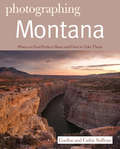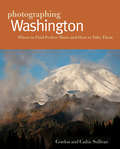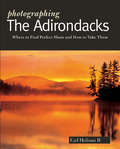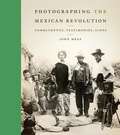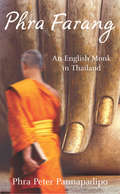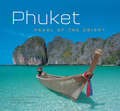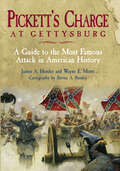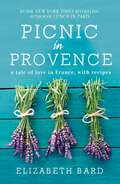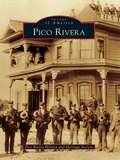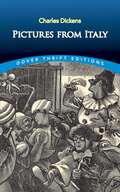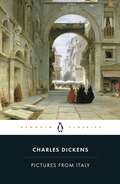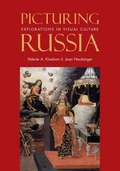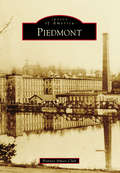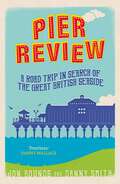- Table View
- List View
Photographing Montana
by Gordon SullivanGordon Sullivan, a Montana native and professional photographer, will guide you to the highlights of the state and shows you how to shoot those places most effectively and when to do so in terms of weather, light conditions etc. Further, Gordon's lifetime in the state will lead you to many backroad opportunities and access points not known to the occasional visitor. Montana is a virtual treasure trove of photographic opportunities--from the high peaks of Glacier National Park, to the seemingly endless vistas of the high plateaus, to the sparse and forbidding badlands of far Eastern Montana. Gordon Sullivan, a Montana native and professional photographer, will guide you to the highlights of the state and shows you how to shoot those places most effectively and when to do so in terms of weather, light conditions etc. Further, Gordon's lifetime in the state will lead you to many backroad opportunities and access points not known to the occasional visitor. With every tourist now having a reasonably good camera at their disposal--even in their cellphone, no one should be without this guide to capturing one of the most beautiful places in the country.
Photographing Washington
by Gordon Sullivan Cathie SullivanDescribed as a nature photographer's paradise, Washington State presents amateur and professional photographers with an endless array of subjects, and there are no better guides to photographing here than Gordon and Cathie Sullivan, authors of twelve books on photography. Washington is home to four National Parks and National Monuments, the spectacular Pacific Coast Highway, the San Juan Islands, Columbia River basin, and a host of wildlife refuges. This is the rich palette from which the Sullivans have chosen 120 stunning sites to highlight the best times, seasons, and techniques for taking memorable photographs. This comprehensive photography guide includes sites of historical interest as well as natural beauty, with details of equipment, exposure, and technical and safety considerations.
Photographing the Adirondacks
by Carl Heilman IIGet great photos whether you use a cell phone or a top-of-the-line digital camera. New York's Adirondack Park is a treasure trove of photographic possibilities; you just need to know where to find them. In this new guidebook, Carl Heilman, an Adirondacks insider, takes you to the best photo sites in the park and shows you how and when to shoot them for your best results ever. This ruggedly beautiful National Park stretches through a large portion of New York State. Much of it is easily accessible, and yet it offers some of the most striking and dramatic natural features to be found anywhere in the Northeast. With the help of this informative guide you'll know just where to go to find its loveliest spots and how best to capture them on film. Now that virtually everyone has a good digital camera in his cell phone, we can all benefit from the tips and advice in this guide. Your visit to Adirondack Park will remain forever memorable with the photos you'll make using the expert help provided in this book. Carl Heilman II is an award-winning outdoor photographer who specializes in nature photography of New York State and the Adirondacks. He has written and provided photographs for several books, and he regularly leads nature-photography workshops to sites in the Adirondacks and in Acadia National Park in Maine. Find out more at www.carlheilman.com.
Photographing the Great Smoky Mountains: Where to Find Perfect Shots and How to Take Them
by Jim HarganFind countless opportunities to capture the beauty and natural diversity of America's most visited national park. On the border between North Carolina and Tennessee lie the forests and mountains of America’s most visited national park, Great Smoky Mountains National Park. Renowned for the diversity of its plant and animal life—the most biological diversity of any area in the world’s temperate zone—this beautiful place also boasts some of the last remaining pockets of Southern Appalachian mountain culture. The park offers countless opportunities to capture its beauty and diversity on film, and in this book professional photographer and writer Jim Hargan leads you to some of the best photo sites throughout this 800-square-mile wonderland.
Photographing the Mexican Revolution: Commitments, Testimonies, Icons
by John MrazThe Mexican Revolution of 1910-1920 is among the world's most visually documented revolutions. Coinciding with the birth of filmmaking and the increased mobility offered by the reflex camera, it received extraordinary coverage by photographers and cineastes-commercial and amateur, national and international. Many images of the Revolution remain iconic to this day-Francisco Villa galloping toward the camera; Villa lolling in the presidential chair next to Emiliano Zapata; and Zapata standing stolidly in charro raiment with a carbine in one hand and the other hand on a sword, to mention only a few. But the identities of those who created the thousands of extant images of the Mexican Revolution, and what their purposes were, remain a huge puzzle because photographers constantly plagiarized each other's images. In this pathfinding book, acclaimed photography historian John Mraz carries out a monumental analysis of photographs produced during the Mexican Revolution, focusing primarily on those made by Mexicans, in order to discover who took the images and why, to what ends, with what intentions, and for whom. He explores how photographers expressed their commitments visually, what aesthetic strategies they employed, and which identifications and identities they forged. Mraz demonstrates that, contrary to the myth that Agustín Víctor Casasola was "the photographer of the Revolution," there were many who covered the long civil war, including women. He shows that specific photographers can even be linked to the contending forces and reveals a pattern of commitment that has been little commented upon in previous studies (and completely unexplored in the photography of other revolutions).
Phra Farang: An English Monk in Thailand
by Phra Peter PannapadipoAt forty-five, successful businessman Peter Robinson gave up his comfortable life in London to ordain as a Buddhist monk in Bangkok. But the new path he had chosen was not always as easy or as straightforward as he hoped it would be.In this truly extraordinary memoir, Phra Peter Pannapadipo describes his ten-year metamorphosis into a practicing Buddhist monk, while being initiated into the intricacies of an unfamiliar Southeast Asian culture.Phra Peter tells his story with compassion, humour and unflinching honesty. It's the story of a 'Phra Farang' - a foreign monk - living and practicing his faith in an exotic and intriguing land.
Phuket: Pearl of the Orient
by Alberto Cassio William Warren Bill WassmanPhuket's breathtaking scenery and sun-soaked beaches are a true tropical paradise. Situated off the western coast of the Malay Peninsula, Phuket has seductive landscapes, unique cultural experiences and a variety of natural color. Phuket: Pearl of the Orient celebrates the beauty of this lovely Thai island and shows readers why it continues to enchant and beguile all who visit.
Pickett's Charge at Gettysburg: A Guide to the Most Famous Attack in American History
by James A. Hessler Wayne MottsA battlefield guide to the sites and history of the climactic attack during the American Civil War’s Battle of Gettysburg.150 years after the event, the grand near-suicidal attack against the Union position on Cemetery Ridge still emotionally resonates with Gettysburg enthusiasts like no other aspect of the battle. On the afternoon of July 3, Confederate Gen. Robert E. Lee ordered more than 12,000 Southern infantry to undertake what would become the most legendary charge in American military history. This attack, popularly but inaccurately known as “Pickett’s Charge,” is often considered the turning point of the Civil War’s seminal battle of Gettysburg. Although much has been written about the battle itself and Pickett’s Charge in particular, Pickett’s Charge at Gettysburg is the first battlefield guide for this celebrated assault.After the war, one staff officer perceptively observed that the charge “has been more criticized, and is still less understood, than any other act of the Gettysburg drama.” Unfortunately, what was true then remains true to this day. The authors of this book—two of Gettysburg’s elite Licensed Battlefield Guides along with one of the Civil War’s leading cartographers—have corrected that oversight.Grounded in the premise that no better resource exists for understanding this unique event than the battlefield itself, Pickett’s Charge at Gettysburg encourages its readers to explore this storied event from a wide variety of perspectives. For the first time, readers can march toward the Copse of Trees with Armistead’s Virginians, advance on the Confederate left with Pettigrew’s North Carolinians, or defend the Angle with Alonzo Cushing’s gunners and thousands of Union soldiers. There is much here to enrich the experience, including dozens of full-color original maps, scores of battlefield and other historic photographs, a unique mix of rare human interest stories, a discussion of leadership controversies, and a rare collection of artifacts directly related to the charge.Pickett’s Charge at Gettysburg is designed for readers to enjoy on or off the battlefield, and will give Civil War enthusiasts an entirely new appreciation for, and understanding of, Gettysburg’s third day of battle.“Extremely well done . . . designed as a tour guide to the area of the battlefield where the famous July 3 1863 Confederate assault on the center of the Union Line took place...the heart of any tour guide is maps, and that feature is served up in exemplary fashion here . . . far more than just maps. The two text authors are battlefield guides and the detail provided is immense . . . strongly recommended.” —Civil War News
Picnic in Provence: A Tale of Love in France, with Recipes
by Elizabeth BardElizabeth and Gwendal decide to move to Provence, a land of blue skies, lavender fields and peaches that taste like sunshine. Part memoir, part chocolate-smudged family cookbook, Picnic in Provence reminds us that life, in and out of the kitchen, is a rendezvous with the unexpected.
Pico Rivera (Images of America)
by Pico Rivera History and Heritage SocietyThe early history of the city of Pico Rivera began in 1887 when two land developers, J. Fletcher Isbell and W. T. Bone, bought the Rivera town site from Joseph Hartley Burke, Louis L. Bequette, and A. A. Bermudez. Rivera literally means "along the river," and today's city boundaries are the Rio Hondo on the west and the San Gabriel River on the east. Rivera developed when the Santa Fe Railroad came through the southern portion of present-day Pico Rivera. The township of Pico was subdivided into lots beginning in 1921. Its name derived from the last Mexican governor of California, Don Pio de Jesus Pico, who built his country home, El Ranchito, along the San Gabriel River. Over the years the two communities grew close, eventually incorporating as one in 1958. The year 2008 marks Pico Rivera's 50th anniversary. This volume documents Pico Rivera from its agricultural past, through its transformation, and into modern suburbia.
Pictures from Italy
by Charles DickensIn 1844, Charles Dickens embarked on a year-long visit to Italy, where he turned his perceptive views of the human condition toward a thoughtful appraisal of the country's soul and character. Combining travelogue with social commentary, he formed a kaleidoscopic portrait of nineteenth-century Italian life as seen by an outsider. Rather than serving as a guidebook, his "pictures" from Italy entertain rather than instruct. Dickens' eye for detail and his abundant humor accent his comments on a country rich in art, character, and scenery. Most of the book focuses on Italy's northern regions -- Tuscany, Milan, and Venice -- in addition to sojourns in Rome and Naples. Although appalled by scenes of abject poverty, much of which he attributed to oppression by the Catholic Church, Dickens was captivated by his encounters with lively street carnivals, curious customs, and vivacious individuals. His reflections offer not only the social observations characteristic of his novels, but also keen insights into the author's mind and personality.
Pictures from Italy
by Charles Dickens'When Dickens has described something you see it for the rest of your life' George OrwellIn 1844, Charles Dickens took a break from novel writing to travel through Italy for almost a year, and Pictures from Italy is an illuminating account of his experiences there. He presents the country like a magic-lantern show, as vivid images ceaselessly appear before his - and his readers' - eyes. Italy's most famous sights are all to be found here - St Peter's in Rome, Naples with Vesuvius smouldering in the background, the fairytale buildings and canals of Venice - but Dickens's chronicle is not simply that of a tourist. Combining compelling travelogue with piercing social commentary, he portrays a nation of great contrasts: between grandiose buildings and squalid poverty, ancient monuments and everyday life, past and present.Edited with an Introduction and Notes by Kate Flint
Picturing Russia: Explorations in Visual Culture
by Joan Neuberger Valerie A. KivelsonThis wide-ranging book is the first to explore the visual culture of Russia over the entire span of Russian history, from ancient Kiev to contemporary, post-Soviet society. Illustrated with more than one hundred diverse and fascinating images, the book examines the ways that Russians have represented themselves visually, understood their visual environment, and used visual images in social and political contexts.
Piedmont (Images of America)
by Bonnes Amies ClubAstride a mighty river separating Greenville and Anderson Counties in the foothills of the Blue Ridge Mountains, Piedmont is a place divided--divided by a river, a county line, and school district lines. But, more importantly, it is tied, connected, and bridged together by its enduring story. Swift and deep, the Saluda River attracted Native Americans, Revolutionary War soldiers, and early settlers to the ford at the shoals. Called Big Shoals of the Saluda by the Cherokee and Garrison Shoals by the settlers, the ford supported a British garrison, an early gristmill, and a venture into textile manufacturing. In fact, Piedmont Manufacturing Company was one of the earliest and largest mills in the South. Today, still spanning the Saluda and linking the mill sites to allow swift crossing, the footbridge connects today's residents to the souls these waters have affected for hundreds of years.
Pier Review: A Road Trip in Search of the Great British Seaside
by Jon Bounds Danny SmithTwo friends, Jon and Danny, embark on a hare-brained journey to see all the surviving pleasure piers in England and Wales, recruiting Midge (a man they barely know) as their driver, even though he has to be back in two weeks to sign on... Join them as they take a funny and nostalgic look at Britishness at the beach and friendship on the road.
Pier Review: A Road Trip in Search of the Great British Seaside
by Jon Bounds Danny SmithTwo friends, Jon and Danny, embark on a hare-brained journey to see all the surviving pleasure piers in England and Wales, recruiting Midge (a man they barely know) as their driver, even though he has to be back in two weeks to sign on... Join them as they take a funny and nostalgic look at Britishness at the beach and friendship on the road.
Pierre and Fort Pierre (Images of America)
by Jan CerneyFrom prairie to river's edge, the Pierre and Fort Pierre area resounds with historical adventure. Visited in 1743 by French explorers-the Verendrye brothers-and by Lewis and Clark in 1804, Fort Pierre was established as a significant fur trading post in 1817 and served briefly as a military fort in 1855. The decaying port settlement was revived during the Black Hills gold rush of 1875, outfitting bull trains. For over a decade, it bustled with freighting activity and stagecoach travel on the Fort Pierre-Deadwood gold trail. When the Chicago, Northwestern Railroad reached the Missouri River in 1880, Fort Pierre's sister city, Pierre, emerged as an important river town. During the days of the open range, Fort Pierre served as a holding place for the millions of cattle to be ferried across the Missouri to the trains at Pierre. In 1889, Pierre was named capital of the state and became the political heart of South Dakota. When nearby reservations opened for settlement, the cattle range began to fill with settlers, changing the scene once again. In these pages, a pictorial history unfolds, the drama of men and women who lived out their dreams near the Missouri.
Pies and Prejudice: In search of the North
by Stuart MaconieA Northerner in exile, Stuart Maconie goes on a journey in search of the North, attempting to discover where the clichés end and the truth begins. He travels from Wigan Pier to Blackpool Tower and Newcastle's Bigg Market to the Lake District to find his own Northern Soul, encountering along the way an exotic cast of chippy Scousers, pie-eating woollybacks, topless Geordies, mad-for-it Mancs, Yorkshire nationalists and brothers in southern exile.The bestselling Pies and Prejudice is a hugely enjoyable journey around the north of England.
Pig 'N Whistle
by Veronica GelakoskaThe Pig 'N Whistle restaurants operated from 1908 to 1968 at more than 40 locations on the West Coast, from Los Angeles to Seattle. These elegant lunch rooms in San Francisco, Oakland, Beverly Hills, Pasadena, and elsewhere were born out of the great 1906 San Francisco Earthquake when hotelier John H. Gage left Hotel America and the rubble on Market Street to make a fresh start. He opened a soda fountain next door to Los Angeles City Hall in 1908 and soon returned to San Francisco to open a second in the newly rebuilt White House Department Store. Dutch immigrant Sidney Hoedemaker became the chain's president, and under his direction, Pig 'N Whistle added Melody Lane, one of the first L.A. restaurants to open a cocktail bar, a development mirrored in the Hollywood film noir classic, Mildred Pierce.Restaurateur Chris Breed and partner Alain Hajjar reinvigorated the memory of the Egyptian Theatre Pig 'N Whistle by reestablishing the classic franchise in 2001 on Hollywood Boulevard.
Pig the Tourist (Pig the Pug)
by Aaron BlabeyPig the Pug is causing havoc and hilarity as he travels around the world.Pig was a Pugand I'm sorry to say,when he went on vacationhe'd cause great dismay.Everywhere he goes around the globe, Pig the Pug offends the locals and causes destruction and devastation. However, in the end, Pig's rudeness comes back to bite him...Rich with author-illustrator Aaron Blabey's signature rhyming text and unforgettable illustrations, Pig the Tourist is a laugh-out-loud story that follows the six previous books in the series (Pig the Pug, Pig the Winner, Pig the Elf, Pig the Star, Pig the Fibber, and Pig the Stinker).
Pigeon River Country: A Michigan Forest
by Franz Dale ClarkeThe long awaited new edition of a classic offers memories, myths, and meanings of the largest contiguous piece of wild land in Michigan's Lower Peninsula. This updated edition explores more deeply why and how the outdoors moves and compels us. It’s a book about mice who sing, elk who wear collars, deer who kiss, and birds who could dictate their compositions to Mozart. It's about the human species interacting in generous and sometimes misguided ways with the rest of life. It's about men trying to ripen pinecones into pineapples and women taking better aim with a revolver than expected. It's about poetry—from Mary Oliver, Lao Tzu, and Theodore Roethke—and seeing hawks dive in a night sky or feeling oil geologists shake the earth below. It's about finding fish dead in the river by the thousands and crouching behind a stump to watch beaver build a dwelling. While this book considers life beyond the boundaries of Pigeon River Country, it is steeped in the specifics of a place that lives mostly on its own, instead of human, terms. The Pigeon River Country is a remote northern forest, ecologically distinct from most of the United States. Laced with waterways, it has a storied past. Dale Clarke Franz has collected personal accounts from various people intrigued with the Pigeon River Country—including loggers, conservationists, mill workers, campers, even the young Ernest Hemingway, who said he loved the forest "better than anything in the world. " There are comprehensive discussions of the area's flora and fauna, guides to trails and camping sites, and photos showcasing the changing face of this hidden national treasure.
Pigs of Paradise: The Story of the World-Famous Swimming Pigs
by T. R. Todd“The Bahamas are famous for sun, sand—and swimming pigs.” —National GeographicIn the middle of paradise, with billionaires and celebrities for neighbors, is an island populated only by swimming pigs. For decades, this archipelago of 365 islands would remain largely unknown to the world. It would not be a ruthless pirate, pioneering loyalists, a notorious drug kingpin, or the infamous Fyre Festival that would unveil Exuma to the world, but rather the most unlikely of creatures. Appearing in magazines, videos, newspapers, commercials, TV shows, and countless selfies, the Swimming Pigs of Exuma, in the Bahamas, have become a bucket-list sensation and have been named one of the marvels of the universe. But how did they reach this celebrity status? What made them so famous? And why, in February 2017, did so many of them die? Pigs of Paradise is an unlikely story of humble beginnings and a swift rise to stardom. With interviews from historians, world-renowned ecologists, famous pig owners, and boat captains, it thoughtfully considers what this phenomenon says about not only these animals but also about us.
Pike County
by Lori StreleckiFormed in 1814, Pike County was originally comprised of the townships of Middle Smithfield, Delaware, Upper Smithfield, Lackawaxen, and Palmyra. As years passed, other townships were added and some of the names changed, and today Pike County consists of 13 townships and boroughs. Even before Pike County was formed, the stories of the people, land, and events wove an intricate tale. The early daredevils who rafted lumber to Trenton and Philadelphia, using the Delaware River as their byway, were a rough?and?tumble bunch. As time went on, these mavericks gave way to new ones and the stories of entrepreneurs, trendsetters, great men and women, and fascinating events were etched into the county's history. Using vintage photographs from the Pike County Historical Society's archives, Pike County chronicles the people and stories that make this area unique.
Pilgrim in the Palace of Words: A Journey Through the 6,000 Languages of Earth
by Glenn DixonPilgrim in the Palace of Words is about language, about the words that splash and chatter across our tongues. Some six thousand languages are still spoken on the planet, and author Glenn Dixon – an expert is socio-linguistics and a tireless adventurer – travels to the Earth’s four corners to explore the way these languages create and mould societies. As one philosopher said, languages are Houses of Being. After doing graduate work in linguistics, Dixon wanted to visit these houses or "palaces" himself – to stroll along their sidewalks, knock on their doors, and peek in their windows. He wanted to see what they were hiding in their basements … even if it meant a little bit of trouble. In some cases, a whole lot of trouble! Join him on his adventure as, with wit and humour, he works toward a real understanding of how and why we communicate the way we do in the Global Village.
